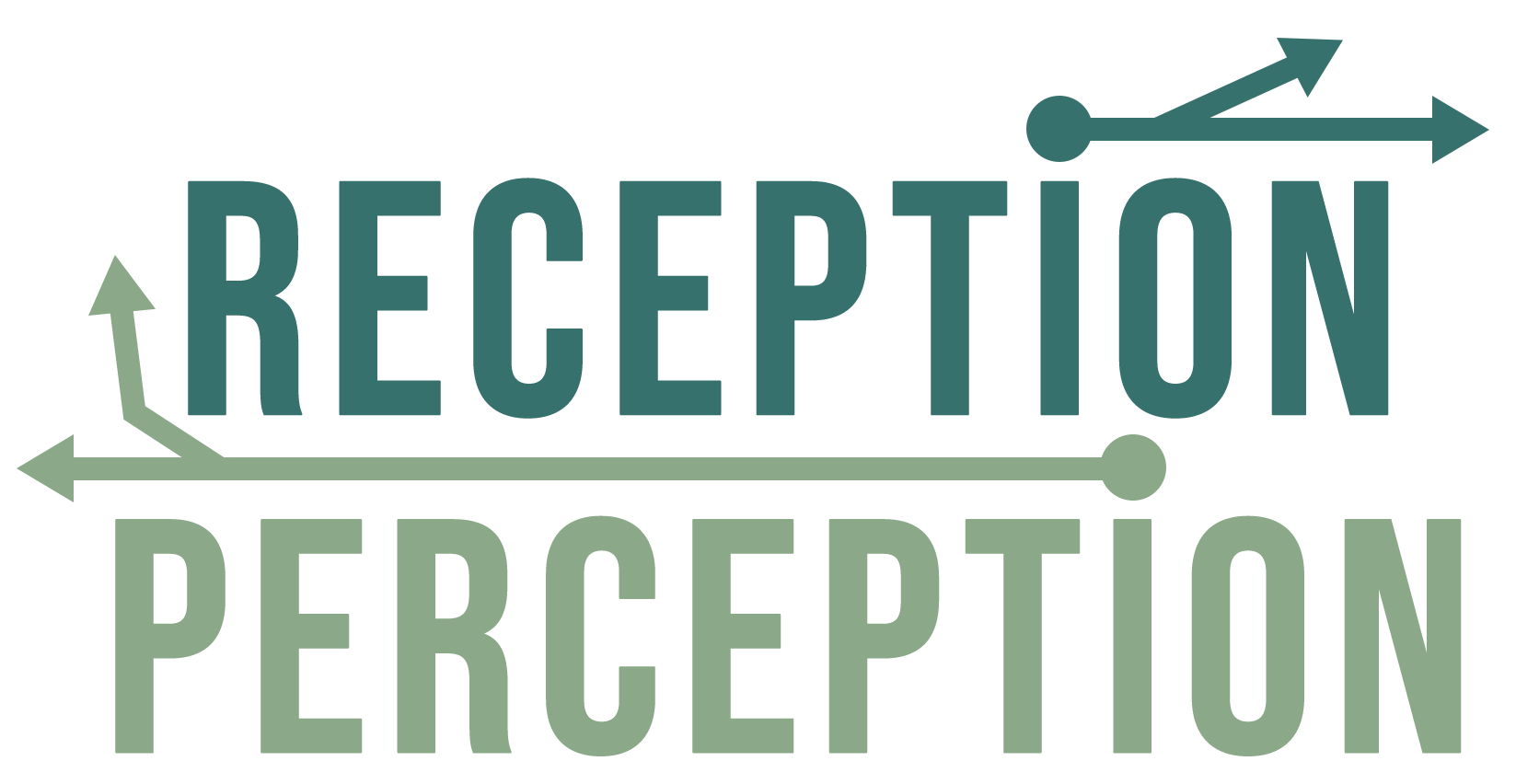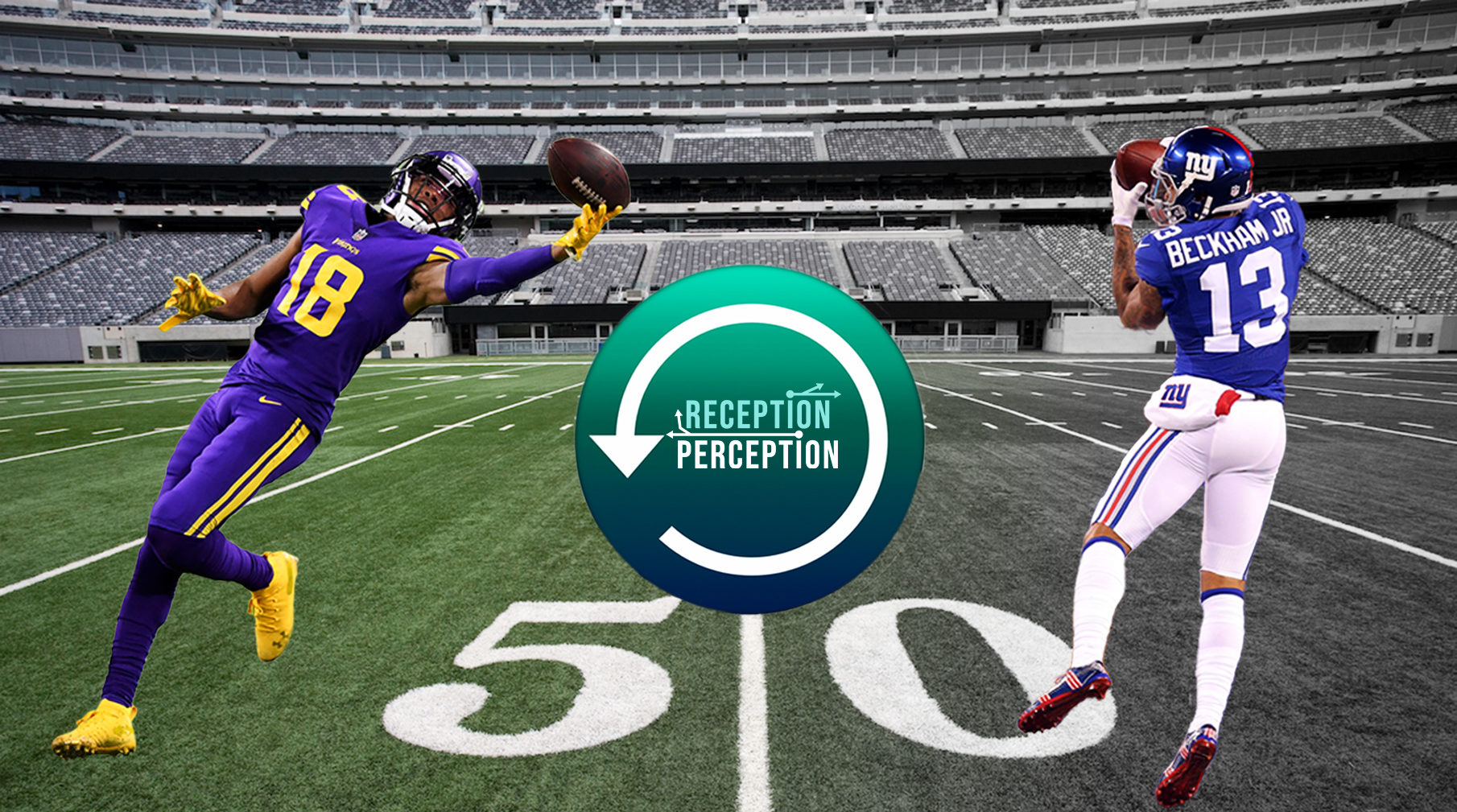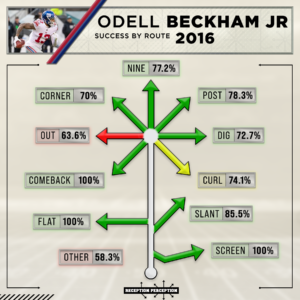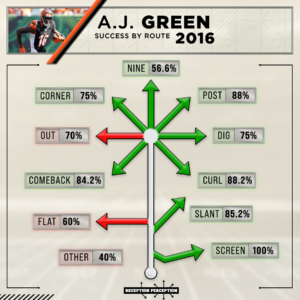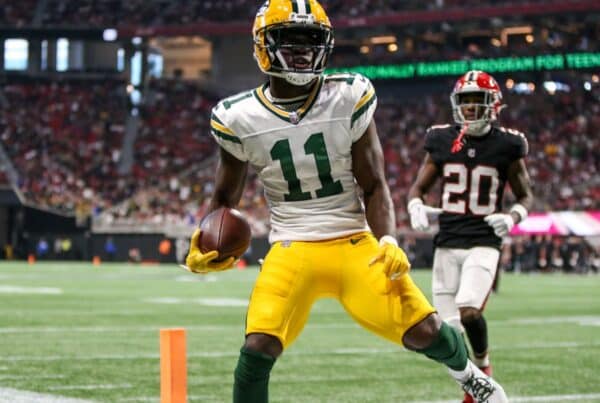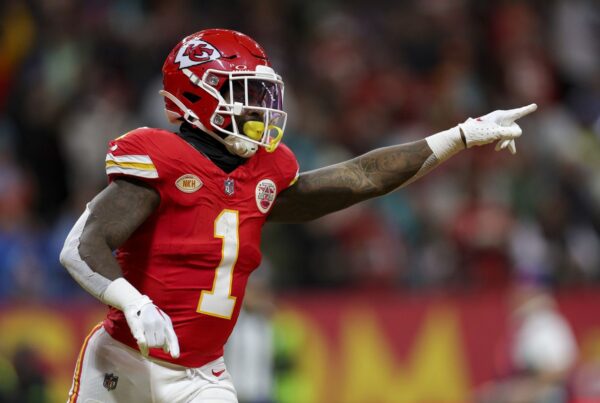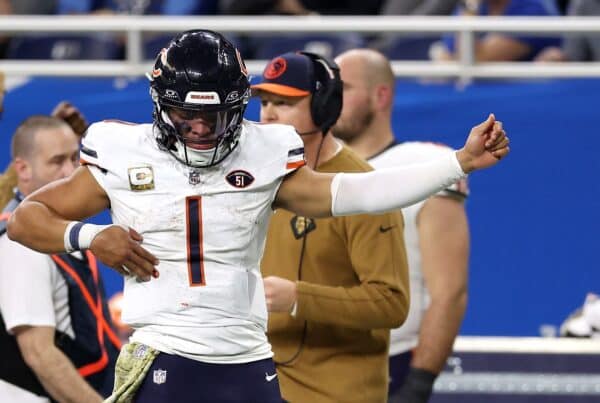The Reception Perception methodology prides itself on telling you who is good, before they are good. But like all stats, RP still requires some context to be used to its fullest extent and help you win your fantasy seasons. One of the best tools to give some context to how good a player could be are player comparisons. Since SICKO tier subscribers can access ALL the historical RP data tables for the first time, I put together this article to show just how useful those are. The main comparison identifier I used was success rate vs. coverages (focusing mainly on man and press), then route percentage/route success, and finally their physical profile. Using these metrics, I’ve highlighted a few 2020 receivers and their most similar historical profiles.
NOTE: This article Is 100 percent free for anyone to view but Reception Perception is a paywall site. If you enjoy the exclusive metrics and analysis in this article, sign up for one of our three tiers of access to get Reception Perception content on wide receivers all year-round.
2020 Justin Jefferson -> 2016 Odell Beckham Jr.
Justin Jefferson absolutely set the league on fire his rookie year, breaking the single-season rookie receiving yards record. The last receiver to have that electric of a rookie season was, you guessed it, Odell Beckham Jr. which is noted in Jefferson’s 2020 Profile. Funnily enough, it wasn’t Beckham’s rookie season that Jefferson was most similar to, it was his profile from two years later.
While Beckham checked in that season a little better in both press and zone, they finished within 0.1% of each other in man coverage success rate. Having that level of success vs. man coverage as a rookie is something only Beckham has done in RP history. They were also asked to play very similar roles on their offense, primarily lining up on the outside, both taking less than 20% of their snaps lined up in the slot.

Their route trees and route percentages are both nearly identical but Jefferson had an equal to or higher success rate than Beckham on every route other than the nine, comeback, and flat. The freaky thing is, they both came out of LSU with the same knocks on them. Because of their similar physical builds and lack of top-end speed, running the exact same 40-yard dash at 4.43 seconds, everyone considered them as slot-type receivers with good YAC ability. It’s clear both managed to prove people wrong early in their careers. Beckham followed his impressive rookie year with two more top-five fantasy seasons, never scoring fewer than 10 touchdowns. That’s the clear area where their comparisons differ, Jefferson’s record-setting year only amounted to seven TDs compared to Beckham’s 10 in 2016. If Jefferson improves on his already stellar separation skills coming into his sophomore season it’s not unreasonable to predict he could hit the same heights that Beckham did early in his career making his WR8 ADP more than justifiable.
2020 D.J. Moore -> 2015 Eric Decker
At first, this one took me a little by surprise but after reaching into the depths of my memory of watching Decker play, it really started to click. While Decker is mostly remembered for his career as a Bronco, his 2015 season was his second year as a NY Jet and the only season charted by Reception Perception.
As you can see, their coverage success rates are very close sans Moore being more successful vs. press coverage by a good amount. So far Moore has improved every season he’s been in the NFL in his coverage success rates but he’s still not in that elite category vs man or press coverage yet.

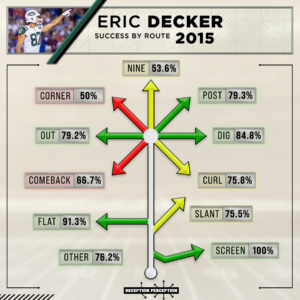
Decker and Moore’s route alignment/success from his 2020 season don’t line up as well as Moore’s rookie season because he switched to seeing the majority of his snaps on the outside, whereas Decker was primarily in the slot at this point in his career. That allowed Moore to open up his route tree a little bit and show what he is capable of as a receiver but it also saw him run less of those slot routes that he ran his rookie year that gave him more of a consistent floor. It would be nice to see Moore deployed a little more in the slot again in 2021 to allow him to take advantage of those short and intermediate routes that showcased his YAC ability but sometimes…we don’t get everything we want in fantasy football.
While Decker was never pegged as athletic as Moore, their athletic builds and profiles are more similar than I expected. Neither of them possesses that top-end speed to be a burner but are incredibly quick in short area situations and have a knack for finding the empty spots in zone coverages. What made Decker such a valuable fantasy player during his prime seasons was his ability to haul in double-digit touchdowns, most notably his 13 touchdown season with Peyton Manning at the helm. Moore on the other hand has been held back from fantasy stardom by his lack of touchdowns, never scoring more than four in a single. Decker had plenty of seasons in the spotlight but they all came as a 1B to a Demaryius Thomas or a Brandon Marshall on an offense that sustained two double-digit touchdown receivers. I see Moore’s path to a top-12 season similar to Decker’s unless the Panthers can turn Darnold’s career around fast, 2021 may not be the year we see Moore make the leap.
2020 Brandon Aiyuk -> 2016 A.J. Green
Let me take you for a ride on this one, as if Reception Perception hasn’t hyped up Brandon Aiyuk enough already. These two profiles are just eerily similar. I tried to search these tables for a closer match in success rates vs coverage for any two receivers in the database just to see and couldn’t find one.
Aiyuk’s rookie season profile already highlighted the kind of superstar track he is on based on his success rate vs. man and press. Comparing them to Green emphasizes it even more. Not a single success rate between Green and Aiyuk here varies more than 0.4% from each other. To give some context to Green’s 2016 season it was the only time in his first seven seasons he finished outside a top-24 fantasy receiver, only because he missed the last six games of the season due to injury. Before that injury, Green was absolutely DOMINATING and was on pace for over 1,500 yards which would’ve easily been the best season of his career. Aiyuk was running routes at that level in his rookie year.
The similarities don’t end there though. Aiyuk and Green are seen as two different types of receivers, a lot of which is still leftover from the former being perceived as a catch and run/gadget guy coming out of the draft.

In reality, he was used as a true X-receiver just like Green, both of them lining up on the outside for about 70% of their snaps. They both excelled in that position as you can see by their trees, coming in above average at every level of the field. Running nearly the same 40-time, the only real difference in their athletic profiles is that A.J Green stands about four inches taller. That difference should be more than accounted for with Aiyuk’s crazy 6’9” wingspan (that’s not a typo either look it up) and his 40 inch vertical. There is nothing physically that Green could do on the field that Aiyuk can’t. It’s time to ditch those preconceived notions that Aiyuk is a YAC or gadget receiver and let Reception Perception show you that he can be an A.J Green type of No.1 receiver.
Read all the profiles of the 2020 receivers in this article Here. SICKO members can access Historic Data Tables Here
NOTE: This article was 100 percent free for anyone to view but Reception Perception is a paywall site. If you enjoyed the exclusive metrics and analysis in this article, sign up for one of our three tiers of access to get Reception Perception content on wide receivers all year-round.
